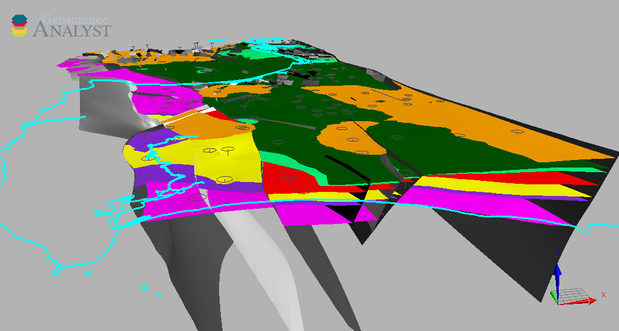
The subsurface stratigraphy and structure of the southern Perth Basin was interpreted using reflection seismic data tied to well intersections and potential field data, and is presented in GSWA Report 184. The interpreted horizons (grids) and faults from these campaigns were modelled in 3D using the GOCAD modelling software. The SKUA workflow function within GOCAD was used to ensure correct and watertight contacts between faults and horizons while maintaining an exact fit to well data.
The southern Perth Basin represents the southernmost extent of the Gondwanan interior rift in Western Australia, and now forms part of the passive margin of Australia. The Geomodel presents a new seismic interpretation of the basin that is tied to revised well formation tops constrained by recent resampling for palynology and re-evaluations of historical palynology reports. Newly reprocessed legacy seismic data and recent seismic data acquisition have helped image the deepest depocentres of the basin, and have resulted in identification and confirmation of the tectonic events that shaped the basin.
The southern Perth Basin saw almost uninterrupted sedimentation from at least the early Permian (or possibly earlier) until the Early Cretaceous breakup. Three sedimentary intervals in particular show thickening into the major faults, suggesting at least three phases of extension: pre-Permian or earliest Permian extension, Late Triassic to Early Jurassic extension, and Late Jurassic to Early Cretaceous rifting. The north-striking Darling Fault and the Badaminna Fault system, and the north- to north-northwesterly striking Busselton and Dunsborough Faults played significant roles during basin tectonism.
Late Jurassic to Early Cretaceous oblique rifting saw intense basinwide normal faulting, rapid subsidence and localised contractional structures along major faults. It also led to extrusion of the Bunbury Basalt and continental breakup between the Australia–Antarctic continent and Greater India.
For further information contact:
3D.geoscience@dmirs.wa.gov.au
